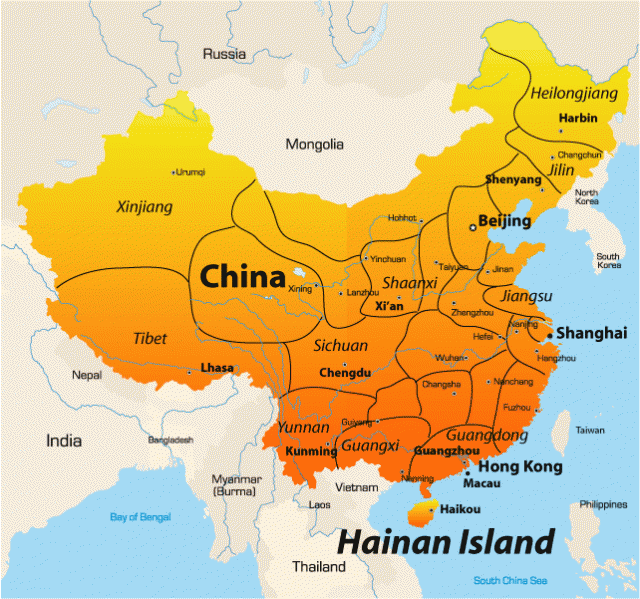Hainan Island
THE SECOND-largest island (after TAIWAN) in CHINA with an area of 13,104 square mi (33,940 square km), Hainan Island is the most southerly province located in the South China Sea. The island is situated south of Guangdong province and west of VIETNAM. The topographic structure of the island resembles a staircase, with towering mountains in the middle and descending hills, plateaus, and plains toward the periphery.
Hainan Island enjoys a tropical maritime climate with abundant rainfall and year-round sunshine. The annual average temperature is about 77 degrees F (25 degrees C) and the average rainfall is 63 in (160 cm). Winter and spring are considered the dry seasons, while summer and autumn are wet. Good sunlight, heat and water allow a rich variety of crops like rice, tropical fruits, and coconut to be cultivated on the island. It is rich in mineral resources such as salt, natural gas, iron ore, and oil.

But the island is also exposed to tropical storms and typhoons that hit the southeastern coast from July to September. Although geologically stable, it has a history of volcanic eruptions and mild earthquakes. Diseases ranging from malaria to mosquito-borne viruses plague the island.
Hainan Island is home to over 4,200 plant species and some 560 animal species, making it a destination for researchers. But deforestation could well threaten species extinction. The island is also a growing estination for tourists. Mainland Chinese and foreigners mostly flock to the southern coastal city of Sanya for surf and sun. In addition, the island has played host to international events like the Miss World Contest and Boao Forum for Asia.
Historically, the Li ethnic peoples were the first to inhabit the island 3,000 years ago. Other ethnic groups include the Miao and Hui peoples. The Han Chinese form the majority group. Backward and remote, the island was a place for exiles. In the early 20th century, many Hainanese emigrated abroad in search of a better life. Today, about 2 million Hainan Chinese are scattered in 53 countries worldwide.
In 1988, the island was made a special economic zone to boost foreign investment. The gross domestic product has increased tremendously, but economic development has gone through some boom-and-bust cycles. While rubber and agriculture are traditional industries, tourism, petrochemicals, biopharmaceuticals and machinery and electronic industries are expanding.